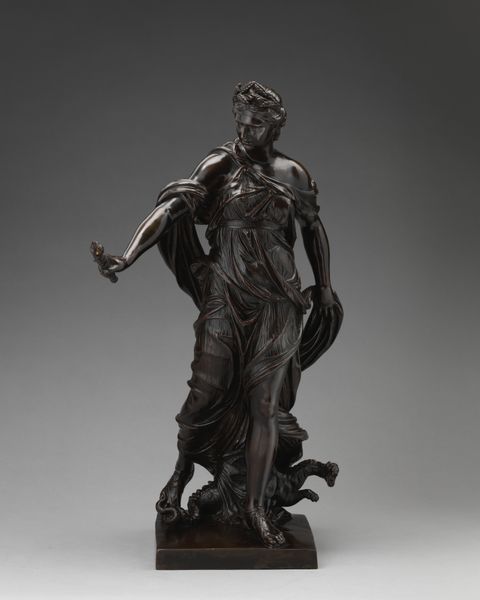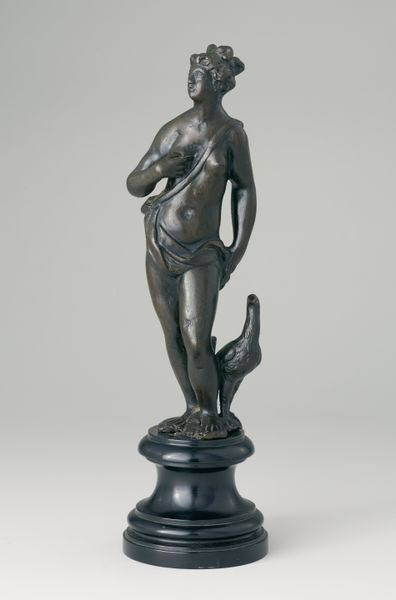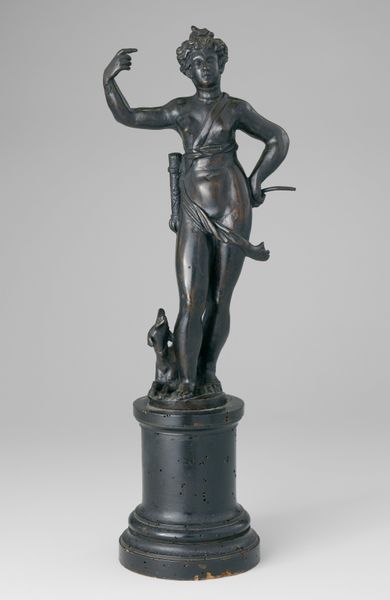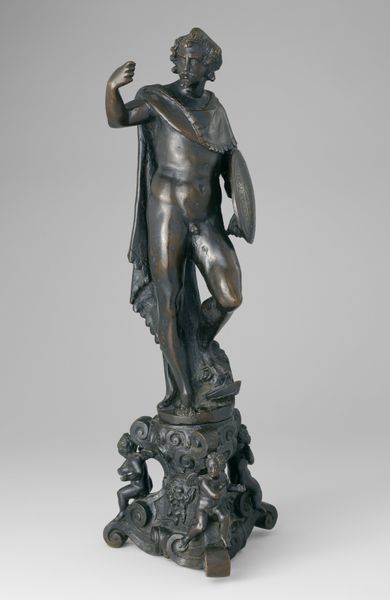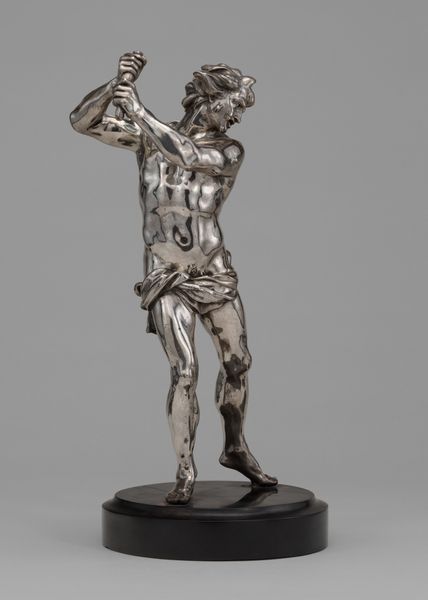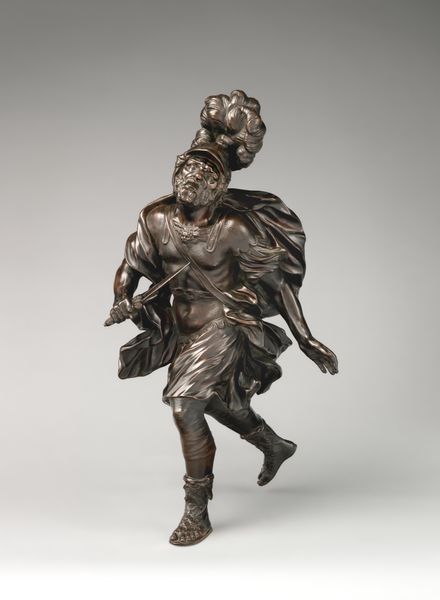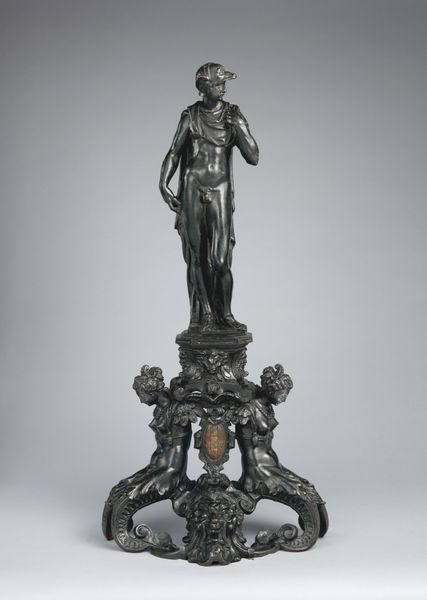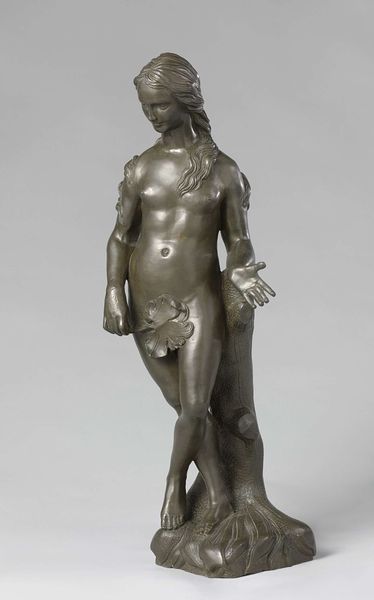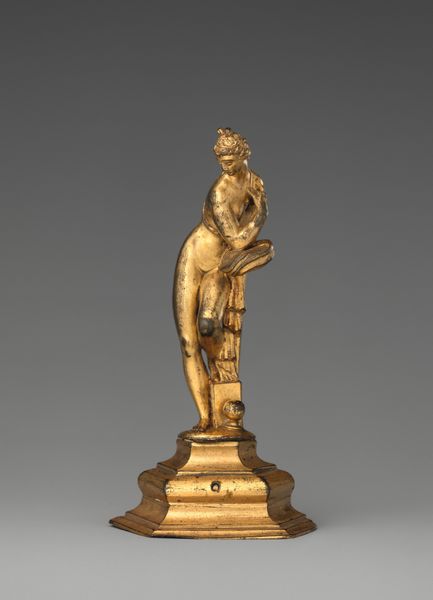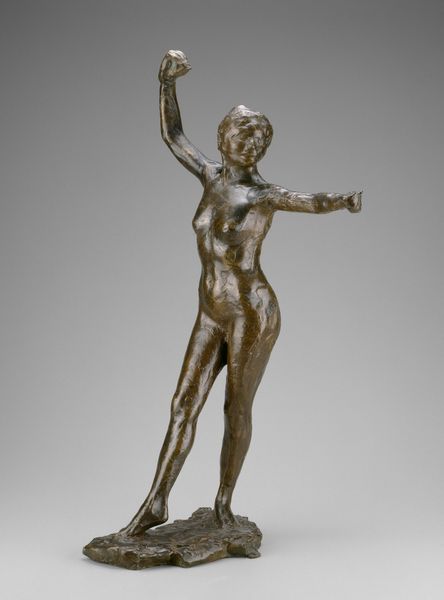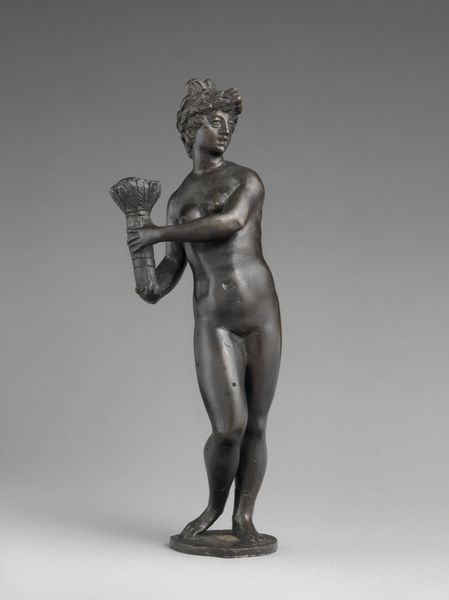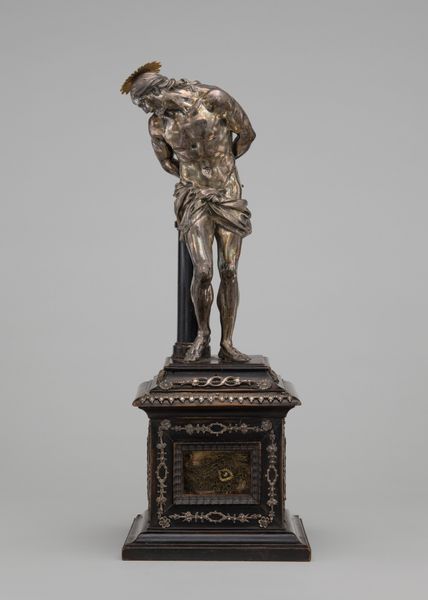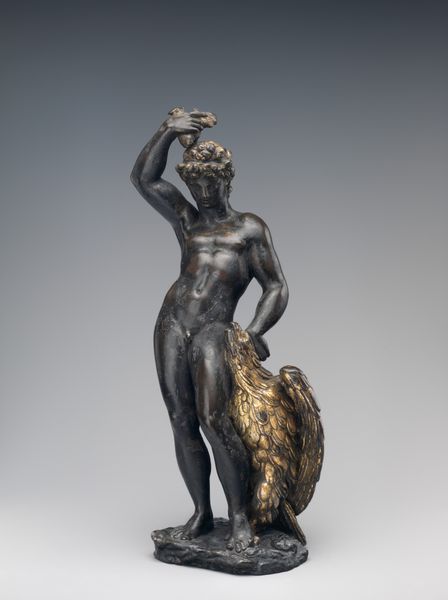
bronze, sculpture
#
portrait
#
baroque
#
sculpture
#
bronze
#
figuration
#
sculpture
Dimensions: H. 125.5 cm.
Copyright: Public Domain
Curator: Here we have an andiron, dating from 1600 to 1700, attributed to Niccolò Roccatagliata. It's currently held at the Metropolitan Museum of Art. Editor: My initial impression is of strength. The way the figure is poised, with that confident gaze and the firm grip, it's quite commanding despite its size. It must have been quite stunning on display. Curator: Indeed. The sculpture is rendered in bronze and represents a classical figure in full armor, complete with a shield. Andirons like this were not mere functional objects, but potent symbols of power and status within the household. Editor: The figure, perhaps a mythological warrior or goddess, clearly projects authority. The upward gesture of the fist is loaded. Curator: Precisely. That assertive gesture reinforces the ideals of power and control that were so essential to the Baroque era, a period of grandiose display meant to communicate cultural messages. Editor: Is the character easily recognizable? Is this supposed to represent Minerva? Or some sort of militaristic power? Curator: Possibly. The cultural memory tied to classical figures would have certainly evoked associations of heroism and virtuous leadership in viewers familiar with classical literature and mythology. However, I see a distinct connection to martial symbolism, to portray military and household dominion. Editor: Do we know about its intended location? Could it have been prominently displayed? It appears relatively small from this perspective, which makes me doubt it. Curator: It probably decorated wealthy homes; an artwork whose beauty lay not only in aesthetics but also utility and implied privilege. In some eras, such objects of utility became associated with corruption, class divides, and economic imbalances. I wonder about that. Editor: Absolutely. Its placement and function within the household were integral to its message. That melding of functionality and art says a lot about the era’s cultural values and hierarchical social structures. Curator: Ultimately, pieces like these offer a fascinating look into a time when art was so intertwined with societal displays of influence. Thank you. Editor: Yes, it's interesting to ponder what such powerful symbols can mean across time.
Comments
No comments
Be the first to comment and join the conversation on the ultimate creative platform.

